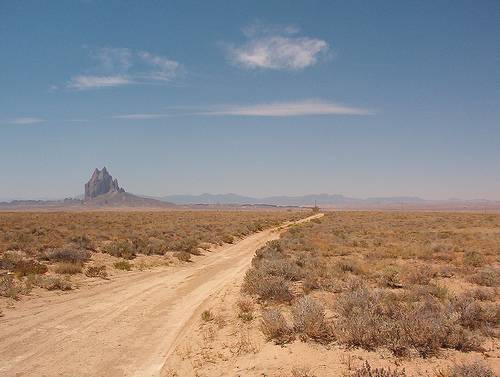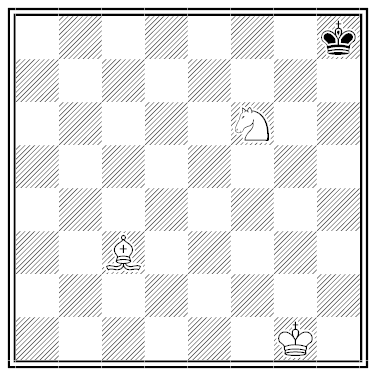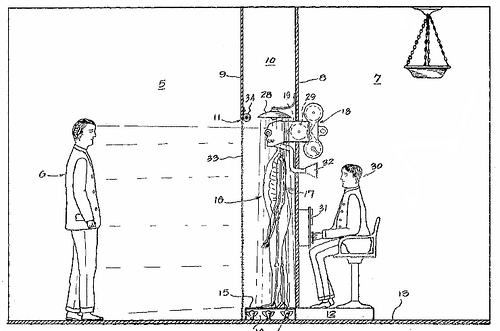
“A universe simple enough to be understood is too simple to produce a mind capable of understanding it.” — Cambridge cosmologist John Barrow

“A universe simple enough to be understood is too simple to produce a mind capable of understanding it.” — Cambridge cosmologist John Barrow
The antiquarian has always been the object of hoaxes. At a convention of the tribe in Banbury, on one occasion, a worn and ancient looking block of stone was sent in with the information that it had been the corner stone of an old building recently torn down. The finders prayed the learned body to interpret the inscription upon it, which read:
SEOGEH SREV EREH WCISUME VAHL LAH SEHS SE OTREH NOS LLEBD NAS REGNI FREH NOS GNIRES ROHYAR GANOED IRYD ALE NIFAE ESOTS SORCY RUB NABOT ES ROHK CO CAED IR.
It took the venerable society several days to discover that the sentiment was ‘Ride a cock horse’ inverted.
— William S. Bridgman, “Famous Hoaxes,” Munsey’s Magazine, August 1903
One day while teaching a class at Yale, Shizuo Kakutani wrote a lemma on the blackboard and remarked that the proof was obvious. A student timidly raised his hand and said that it wasn’t obvious to him. Kakutani stared at the lemma for some moments and realized that he couldn’t prove it himself. He apologized and said he would report back at the next class meeting.
After class he went straight to his office and worked for some time further on the proof. Still unsuccessful, he skipped lunch, went to the library, and tracked down the original paper. It stated the lemma clearly but left the proof as an “exercise for the reader.”
The author was Shizuo Kakutani.
The only problem
with haiku is that you just
get started and then
— Roger McGough

In 1860, the Times of Fort Smith, Ark., published a long account of a discovery said to have been made 90 miles northeast of Fort Stanton, N.M. This condensed version appeared in the Eclectic Magazine that November:
The plain upon which lie the massive relics of gorgeous temples and magnificent halls, slopes gradually towards the river Pecos, and is very fertile, crossed by a gurgling stream of purest water that not only sustains a rich vegetation, but perhaps furnishes with this necessary element the thousands who once inhabited this present wilderness. The city was probably built by a warlike race, as it is quadrangular and arranged with skill to afford the highest protection against an exterior foe, many of the buildings on the outer line being pierced with loopholes, as though calculated for the use of weapons. Several of the buildings are of vast size, and built of massive blocks of a dark granite rock which could only have been wrought to their present condition by a vast amount of labor. There are the ruins of three noble edifices, each presenting a front of three hundred feet, made of ponderous blocks of stone, and the dilapidated walls are even now thirty-five feet high. There are no partitions in the area of the middle (supposed) temple, so that the room must have been vast; and there are also carvings in bass relief and fresco work. Appearances justify the conclusion that these silent ruins could once boast of halls as gorgeously decorated by the artist’s hand as those of Thebes and Palmyra. The buildings are all loopholed on each side, much resembling that found in the old feudal castles of Europe, designed for the use of archers. The blocks of which these edifices are composed, are cemented together by a species of mortar of a bituminous character, which has such tenacity that vast masses of wall have fallen down without the blocks being detached by the shock.
No one has ever found such ruins … but there’s a ship out there too if you want to go looking.
One of Eduard Gufeld’s first chess coaches, A.A. Olshansky, offered him this problem:

“White to mate in half a move.”
Aug. 1, 1932, was a strange day for Londoner G.A. Hinkson:
Suddenly torrential rain fell only one hundred yards from where I was standing. The nearest trees in Kensington Gardens were almost hidden behind a milky mist of heavy rain. The rain-drops rebounding off the street created a layer of spray as high as the tops of the wheels of the taxis standing in the street. Where I was sheltering, hardly a drop of rain was falling. … Then the spray on the ground came nearer like a wave and receded. Suddenly it vanished completely.
From Meteorological Magazine, 64:159-60, 1932.

It took Greer Garson 125 takes to say one line in Desire Me (1947).
The line was “No.”
Robert Mitchum said he stopped taking Hollywood seriously after that.
Ordered to join a jungle snake cult in his native Togo, Tété-Michel Kpomassie chanced to find a book about Greenland in a local Jesuit library. At the first opportunity he ran away.
Kpomassie’s 1981 autobiography, An African in Greenland, tells of his odyssey through West Africa and Europe seeking a route to the frozen island. He finally arrived in the mid-1960s, a black giant among the Inuit:
As soon as they saw me, all stopped talking. So intense was the silence, you could have heard a gnat in flight. Then they started to smile again, the women with slightly lowered eyes. When I was standing before them on the wharf, they all raised their heads to look me full in the face. Some children clung to their mothers’ coats, and others began to scream with fright or to weep.
Kpomassie happily spent the next two years driving a dogsled and hunting seal in a kayak. After eight years, he had reached the land of his dreams — a country with no trees and no snakes.

This one leaves me speechless. Helene Adelaide Shelby was unhappy with the low rate of criminal confessions, so in 1927 she invented a solution. The police put their suspect into the darkened chamber on the left, and he finds himself facing a floodlit human skeleton with glowing red eyes. The skeleton asks questions (via a megaphone in the mouth), and the suspect’s reactions are recorded by a camera and a microphone in the skull.
The effect produces “a state of mind calculated to cause him, if guilty, to make confession.” I’ll bet. What if he’s innocent?